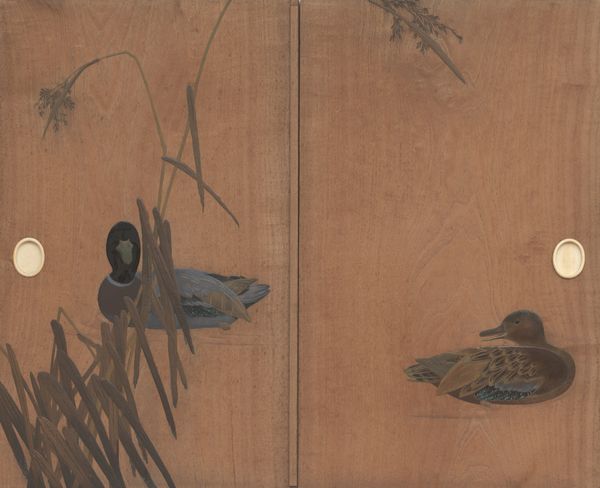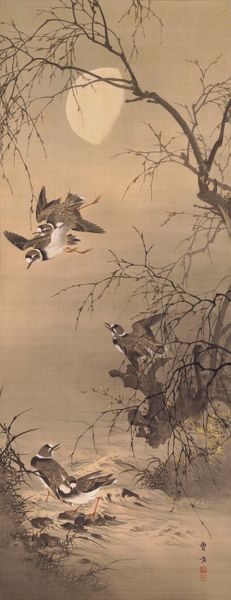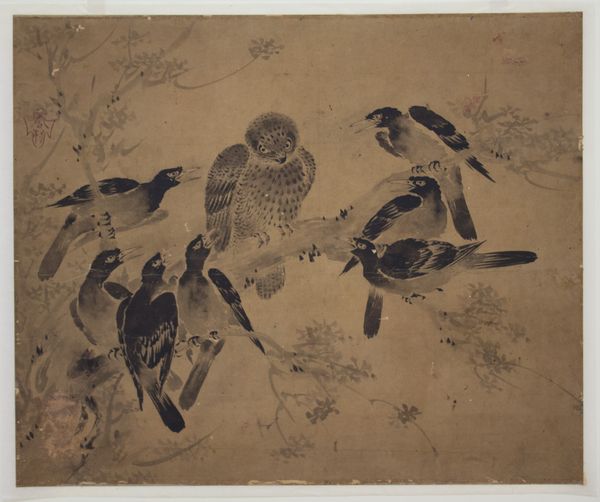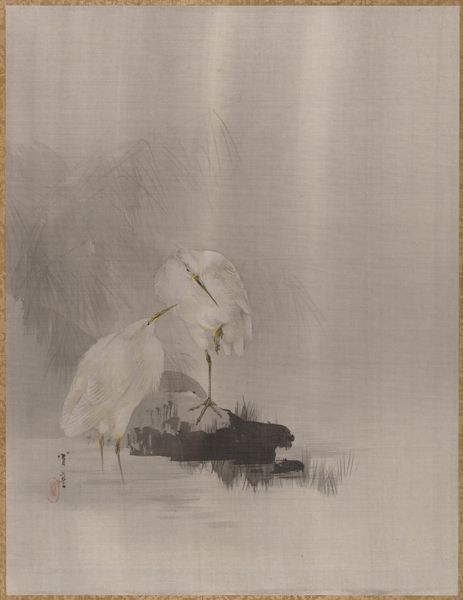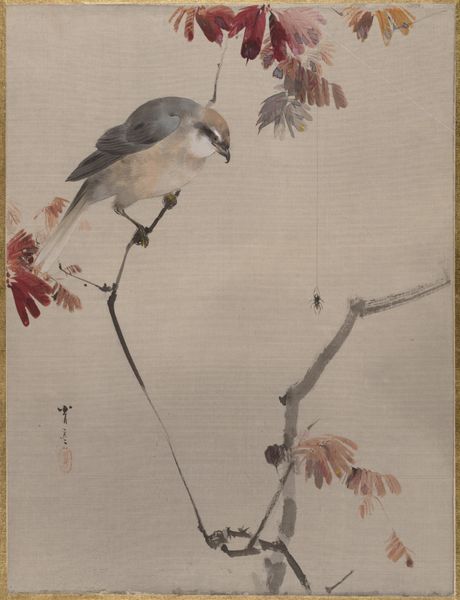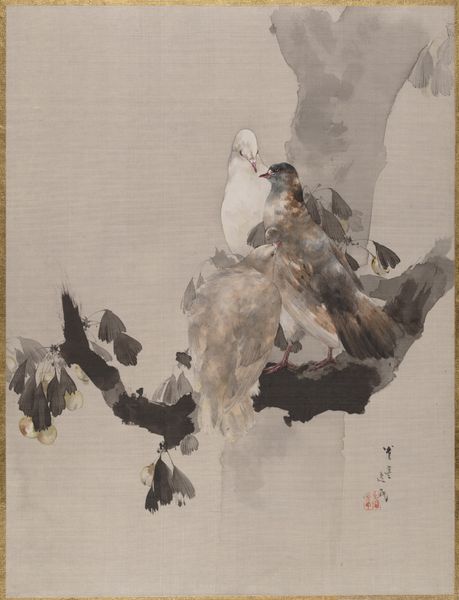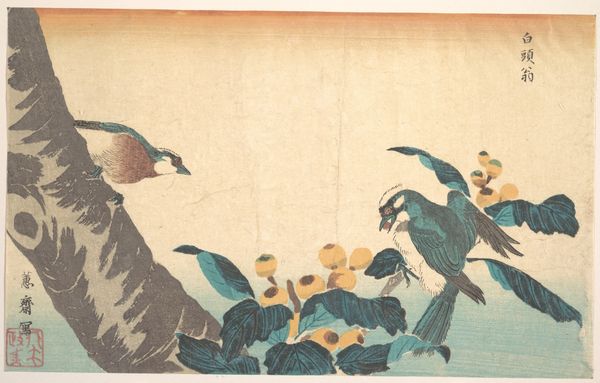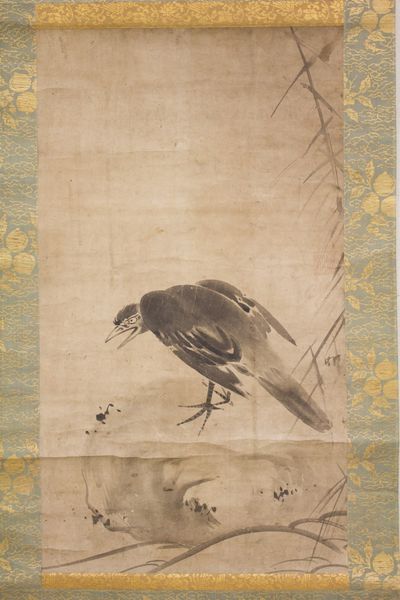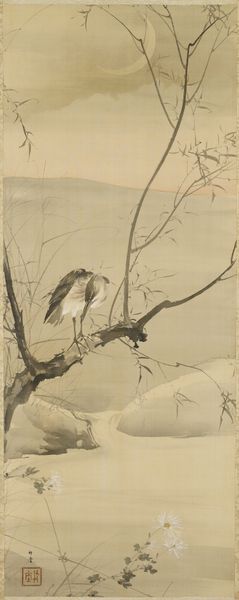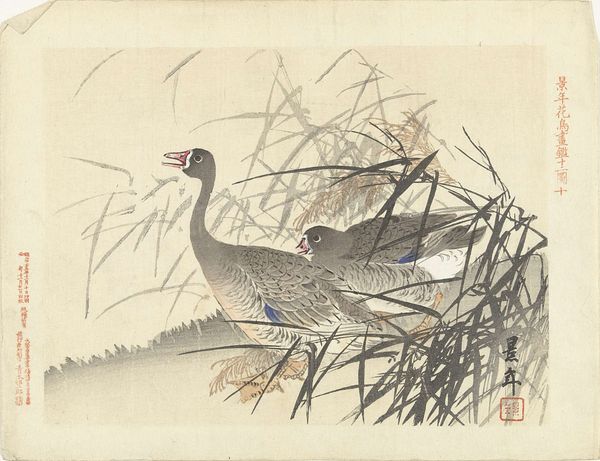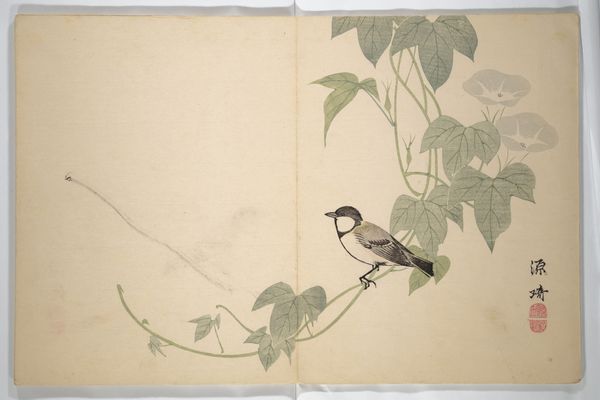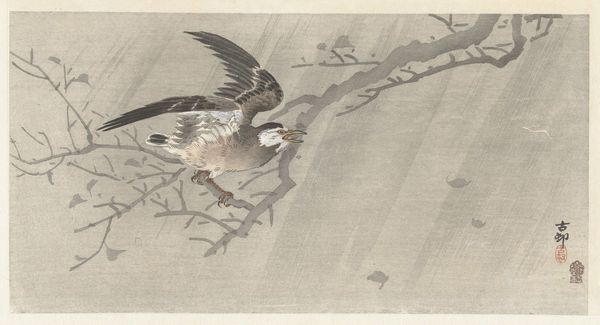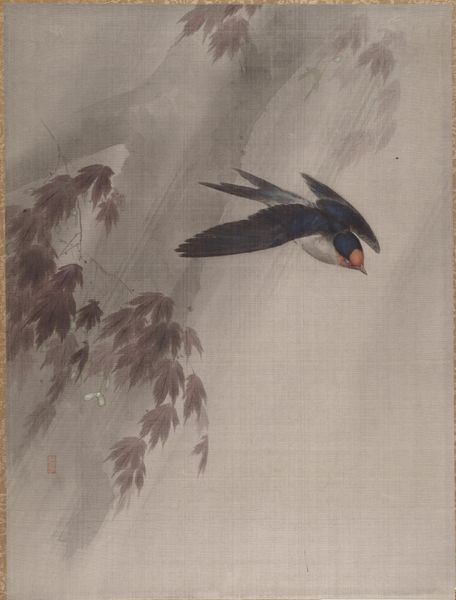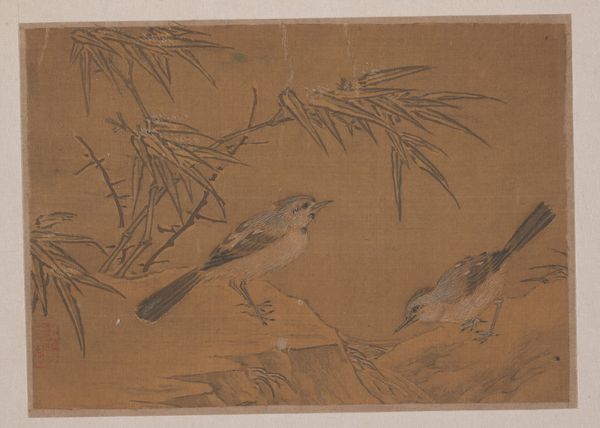
watercolor
#
water colours
#
impressionism
#
asian-art
#
landscape
#
figuration
#
watercolor
Dimensions: 14 x 10 3/4 in. (35.6 x 27.3 cm)
Copyright: Public Domain
Curator: The artwork before us, entitled "Ducks in the Rushes," was rendered in watercolor sometime between 1877 and 1897 by Watanabe Seitei. Editor: What strikes me first is the sheer delicateness of it. The washes of gray create such a subtle, almost melancholic atmosphere, softened by the careful depictions of the ducks themselves. Curator: Indeed, the choice of watercolor as a medium allows for that incredible lightness. You can almost see how Seitei built up the image layer by layer, controlling the flow and pooling of pigment to evoke the texture of the reeds and the softness of the ducks' feathers. The economic realities of the artist's milieu also factored into medium choice and allocation of artistic resources. Editor: And it’s not just the medium, but also how Seitei captures movement. The duck taking flight has this incredible energy, while the others seem to be pausing, observing, maybe contemplating the shifting symbolic meaning between water and the air. Curator: These symbols can indeed carry potent meaning across cultures, in Japan ducks are often symbolic of marital affection, due to their perceived monogamous nature, although scholars today argue such is untrue in terms of reproductive behavior. Speaking of symbolic content, consider how such materials were viewed—mass produced paper supports or fine silk would also denote differing contexts of production. Editor: Precisely. There is an intentional selection in what symbols are made visible, while other forms of knowledge, especially female knowledge, have historically been erased from memory through denial of artistic visibility. Seitei chooses this bird for his stage with the rushes and waters; rushes are another recurring sign of fleeting nature. The water is, of course, transformative— Curator: But also vital—the site of consumption and agriculture. Note the differences of pigment quality between different applications in areas where the line defining form are bolder compared to subtle shading. I am reminded about artistic choices that arise from resource and time allocation pressures, even from something that appears effortless such as this watercolor. Editor: I agree that looking at materials opens other considerations. But perhaps what this artwork does so wonderfully is bring all those levels into conversation: the delicate artistry, the historical content, and the enduring emotional weight of the image. Curator: Absolutely, and through his precise control of this fluid and somewhat fragile medium, Seitei achieves an almost ethereal representation that offers a snapshot into the cultural attitudes and artistic conventions of late 19th-century Japan, even the material underpinnings involved in art production.
Comments
No comments
Be the first to comment and join the conversation on the ultimate creative platform.
